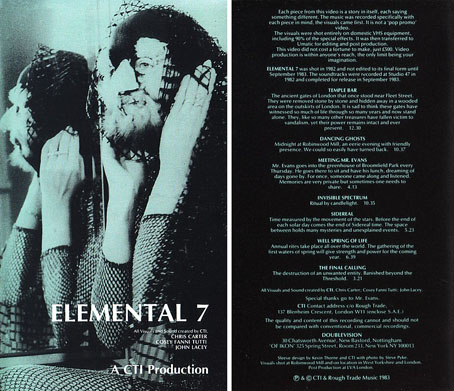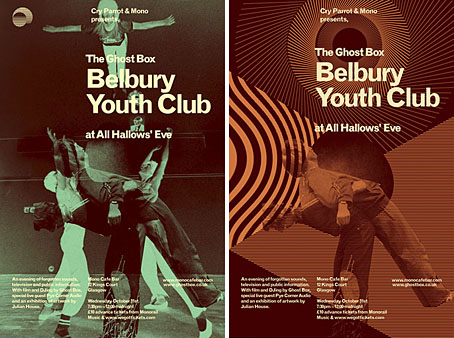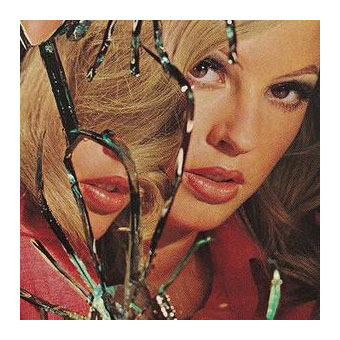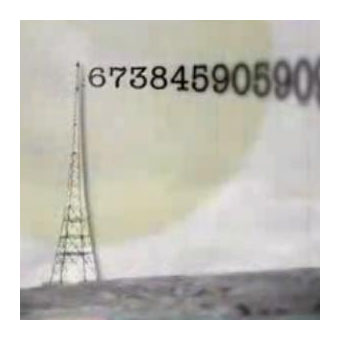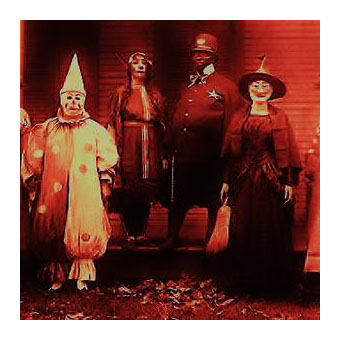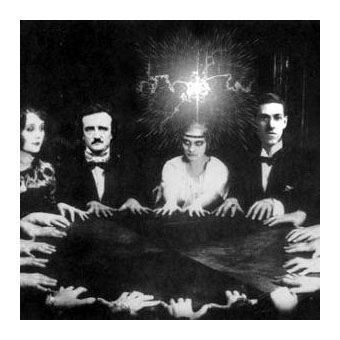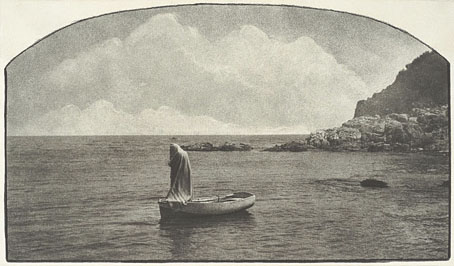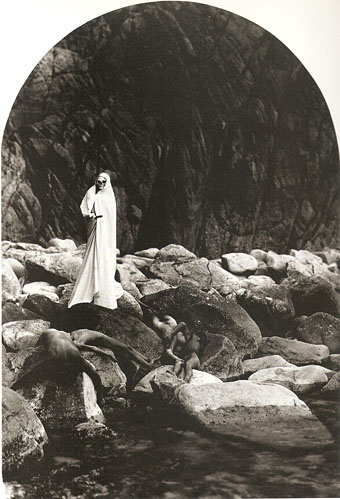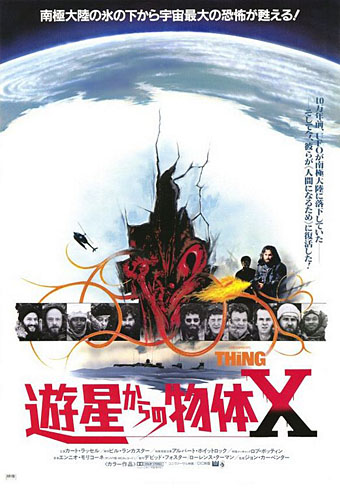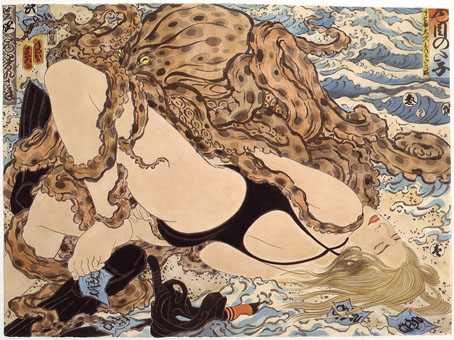Design by CTI and Kevin Thorne.
Yet another of those things I’ve known about for years but have only seen recently thanks to YouTube. Elemental 7 was an early music + video release by Chris Carter and Cosey Fanni Tutti following the split of Throbbing Gristle in 1981. They’d already recorded under the Chris & Cosey name but in 1983 formed CTI—Creative Technology Institute—a side project that allowed for the release of works such as this that differed from their usual electronic output. Elemental 7 is a 50-minute video that for want of a better term might be classed as ambient, the visuals being grainy, impressionistic or semi-abstract images by John Lacey with a soundtrack that’s on the whole less rhythmic than the C&C albums. The whole thing was made for £500, and the quality isn’t supposed to compete with broadcast television. In 1983 it was still a rare thing for groups to take control of their own video production. In the UK few people were doing this aside from Factory Records, who had their own Ikon video label, and some of the Industrial groups such as Cabaret Voltaire, Psychic TV and 23 Skidoo. Cabaret Voltaire released the tape and soundtrack album of Elemental 7 on their Doublevision label.
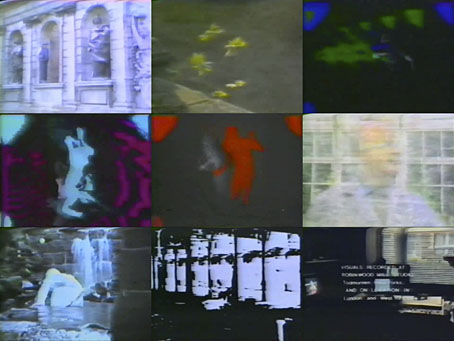
It’s a curious thing being able to see this after so long. I’m very familiar with the music (it was always good late-night listening) but, as with Cabaret Voltaire’s Johnny YesNo film and other Doublevision releases, I didn’t have any means of watching video tapes through much of the 1980s. Nothing this unusual ever appeared on TV, of course. The ritualistic sequences are reminiscent of the early films of Derek Jarman, not least In the Shadow of the Sun which had a soundtrack by Throbbing Gristle, while the opening sequence, Temple Bar, has some historical value in showing the stone gate of the City of London sitting abandoned in Theobalds Park before it was returned to the capital in 2003.
Elemental 7 has never been reissued since its tape release so this is the only way you’ll get to see it for now.
Elemental 7: part 1 | part 2 | part 3 | part 4 | part 5
1. Elemental 7 0:13
2. Temple Bar (The Forgotten Ancient Gates Of London) 12:30
3. Dancing Ghosts (Midnight At Robinwood Mill) 10:37
4. Meeting Mr. Evans (A Moving Experience) 04:13
5. Invisible Spectrum (Ritual By Candlelight) 10:35
6. Sidereal (Time Measured By Movement Of The Stars) 05:23
7. Well Spring Of Life (Gathering The First Waters Of Spring) 06:39
8. The Final Calling (Physical Exorcism) 03:21
9. CTI Credit Sequence 02.17
Previously on { feuilleton }
• Gristleism
• A=P=P=A=R=I=T=I=O=N
• In the Shadow of the Sun by Derek Jarman

